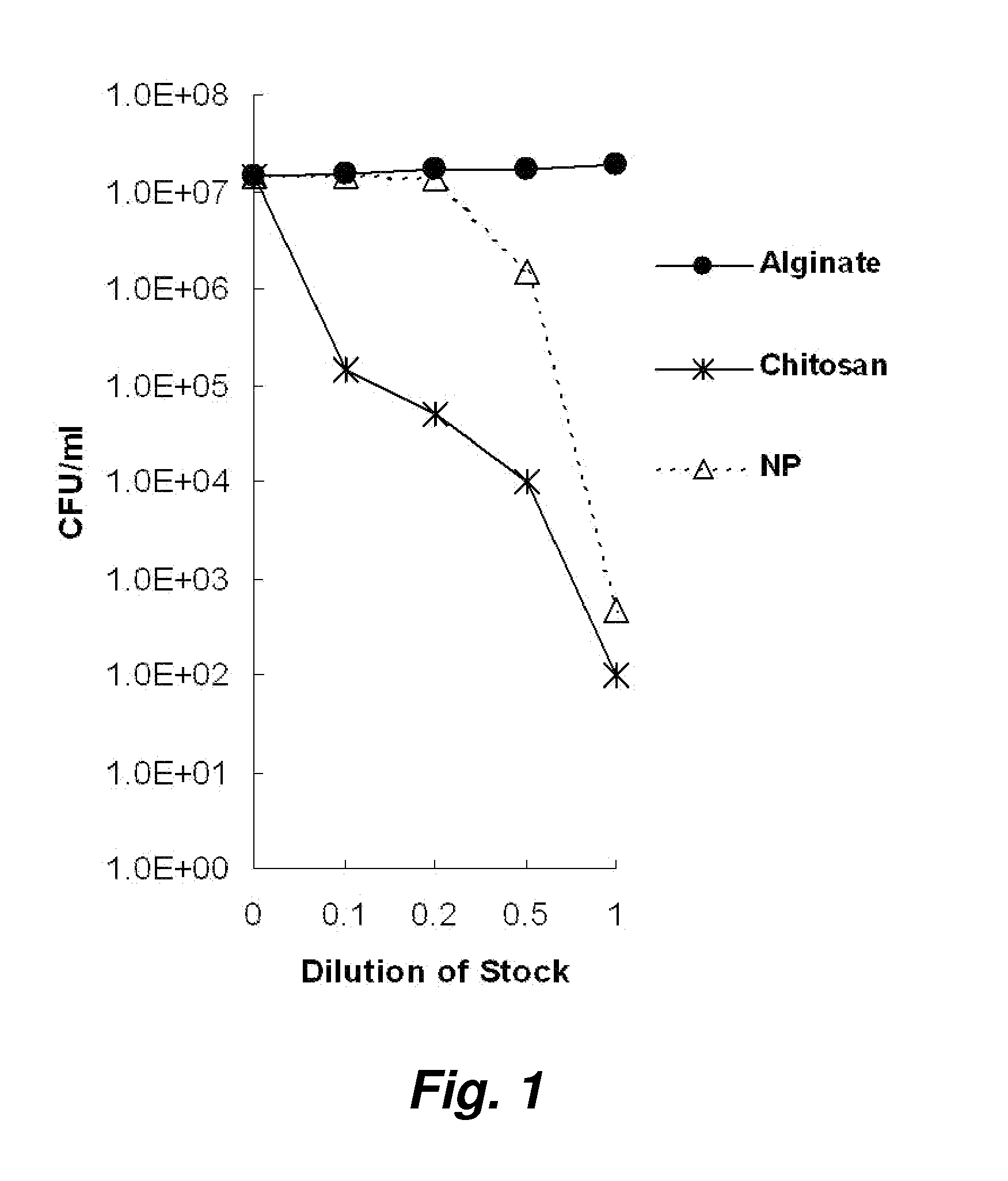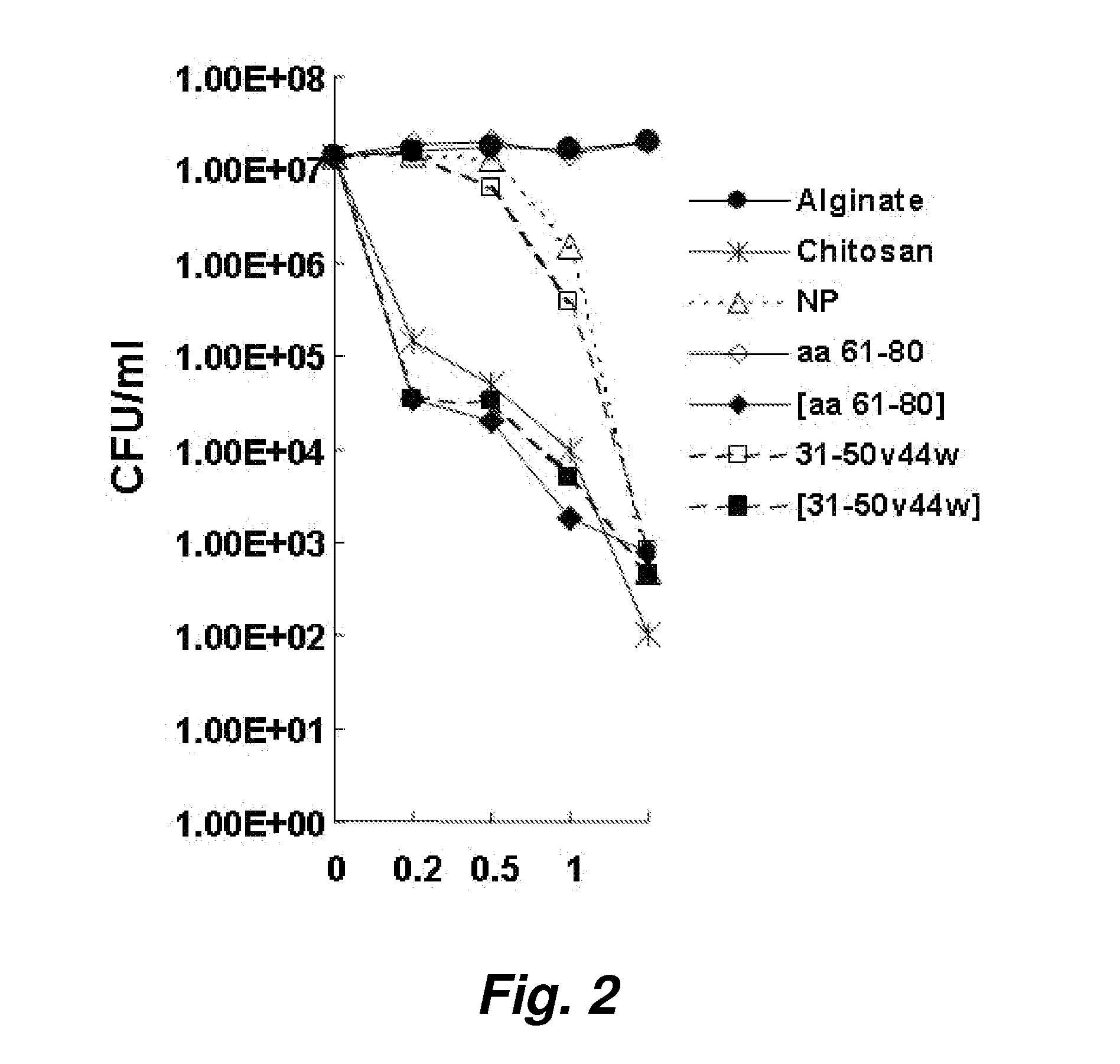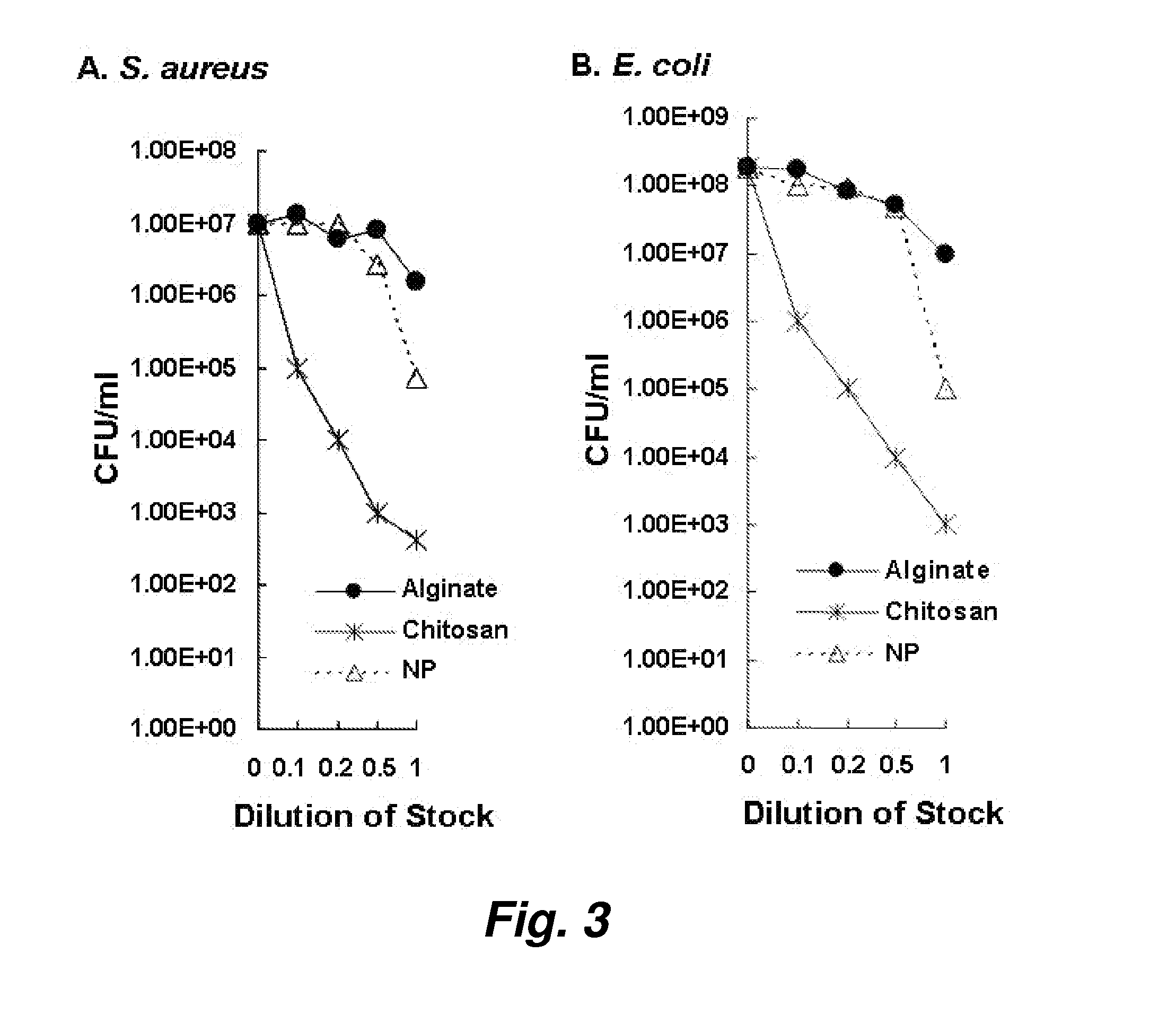Controlled release encapsulated Anti-bacterial and Anti-inflammatory nanoparticles
- Summary
- Abstract
- Description
- Claims
- Application Information
AI Technical Summary
Benefits of technology
Problems solved by technology
Method used
Image
Examples
example 1
Chitosan and Chitosan-Alginate Nanoparticles have Strong Antibacterial Activity against P. acnes
[0089]We hypothesized that both native chitosan and chitosan-alginate nanoparticles themselves have strong antibacterial action. To determine whether the chitosan and chitosan-alginate nanoparticles kill P. acnes, we tested their activity against the aforementioned microbe using the CFU assay. Both chitosan and chitosan-alginate nanoparticles exhibited antimicrobial activity in a concentration-dependent manner, reducing the number of P. acnes (see, e.g., FIG. 1).
[0090]In the P. acnes study (FIG. 1), distilled water and dissolved alginate were used as controls and as demonstrated on the graph, had no influence on the bacteria. Dissolved chitosan and (chitosan+alginate) demonstrated approximately five log of killing.
example 2
Efficacy of Granulysin in Chitosan / Alginate Nanoparticles
[0091]Initial studies began with the encapsulation of the antimicrobial peptide granulysin in chitosan / alginate nanoparticles. The purpose was to develop a stabile controlled release delivery vehicle for the peptide for therapeutic use against P. acnes. During CFU assay experiments, we observed that even the encapsulated non-active peptide (61-80) exerted a therapeutic impact on the bacteria while this peptide alone did not (see, e.g., FIG. 2).
Chitosan and Chitosan-Alginate Nanoparticles have Strong Antibacterial Activity against S. aureus and E. coli
[0092]The activity of chitosan and chitosan-alginate nanoparticles against the pathogens S. aureus and E. coli was also studied.
[0093]The S. aureus experiments (FIG. 3, panel A) illustrate the progressive increase in killing from native chitosan (1 and 2 logs of killing respectively), to chitosan plus alginate (2-3 logs of killing respectively), to encapsulated chitosan nanoparti...
PUM
| Property | Measurement | Unit |
|---|---|---|
| Fraction | aaaaa | aaaaa |
| Diameter | aaaaa | aaaaa |
| Abrasive | aaaaa | aaaaa |
Abstract
Description
Claims
Application Information
 Login to View More
Login to View More - R&D
- Intellectual Property
- Life Sciences
- Materials
- Tech Scout
- Unparalleled Data Quality
- Higher Quality Content
- 60% Fewer Hallucinations
Browse by: Latest US Patents, China's latest patents, Technical Efficacy Thesaurus, Application Domain, Technology Topic, Popular Technical Reports.
© 2025 PatSnap. All rights reserved.Legal|Privacy policy|Modern Slavery Act Transparency Statement|Sitemap|About US| Contact US: help@patsnap.com



